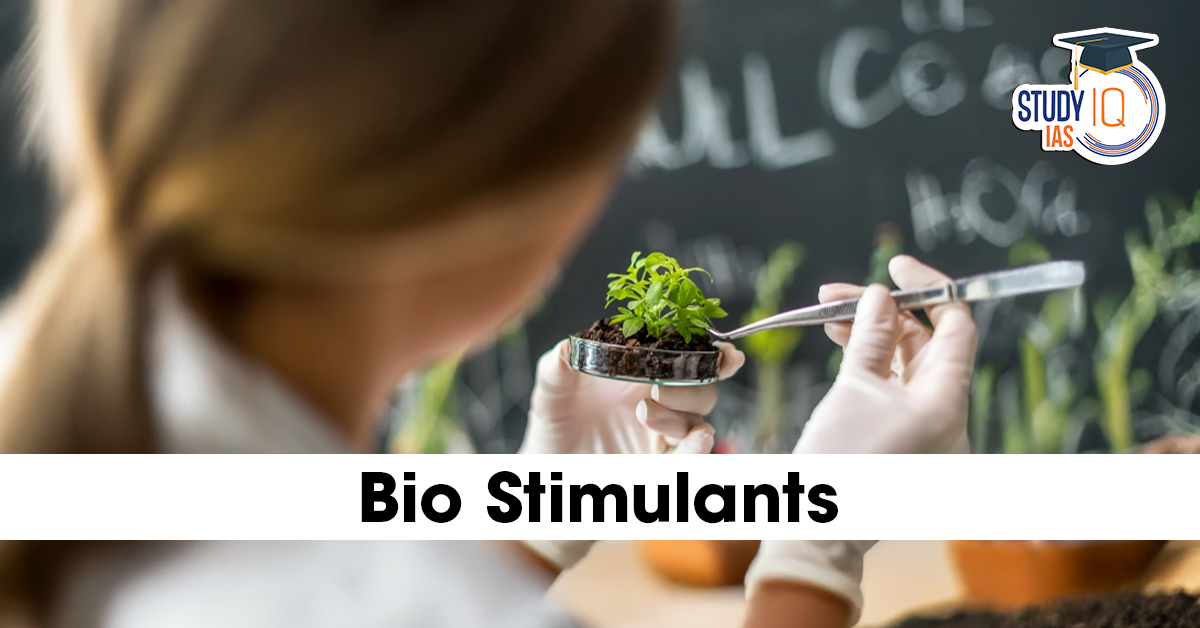Table of Contents
In a move to protect farmers’ interests, the Union Agriculture Ministry has directed states to stop the forced sale of biostimulants alongside subsidized fertilizers. This decision comes after several complaints from farmers across India, prompting the government to tighten the scrutiny on biostimulants—their safety, efficacy, and regulatory compliance—under the Fertiliser (Control) Order, 1985 (FCO). Here’s everything you need to know about biostimulants, their uses, benefits, and recent developments.
What Are Biostimulants?
Biostimulants are natural substances or microorganisms applied to plants or soil that stimulate natural biological processes, helping plants perform better under various environmental and nutritional conditions.
Definition:
Biostimulants are inputs that enhance plant growth, development, and stress tolerance by boosting natural processes, rather than supplying nutrients directly like traditional fertilizers.
Primary Functions of Biostimulants
-
Enhance physiological processes within plants.
-
Promote root growth, nutrient absorption, and soil microbial activity.
-
Reduce dependency on chemical fertilizers and pesticides.
-
Improve resilience to environmental stresses like drought, heat, and salinity.
Key Benefits of Biostimulants
-
Improve Root Development: Stronger root systems help plants access water and nutrients more efficiently.
-
Boost Stress Tolerance: Help plants resist and recover from abiotic stress like drought, extreme temperatures, and salinity.
-
Enhance Nutrient Efficiency: Optimize the uptake and utilization of available nutrients in the soil.
-
Increase Soil Microbial Activity: Improve soil health by stimulating beneficial microorganisms.
-
Improve Crop Quality and Yield: Enhance traits like fruit size, color, sugar content, and shelf life.
Common Types of Biostimulants
-
Humic and Fulvic Acids: Derived from organic matter; promote nutrient absorption.
-
Seaweed Extracts: Natural growth stimulants rich in hormones and micronutrients.
-
Beneficial Fungi and Bacteria:
-
Mycorrhizae: Symbiotic fungi that help plants absorb phosphorus.
-
Rhizobacteria: Improve nitrogen fixation and plant immunity.
-
Biostimulants vs Fertilizers
| Feature | Biostimulants | Fertilizers |
|---|---|---|
| Primary Function | Stimulate natural plant processes | Supply essential nutrients |
| Nutrient Content | Minimal to none | High (N, P, K, micronutrients) |
| Mode of Action | Enhance root growth, microbial activity | Direct nutrient supply |
| Environmental Impact | Eco-friendly, reduces chemical load | Excessive use may degrade soil and water |
Why the Government Stepped In
Recent Complaints
Farmers reported being forced to purchase biostimulants while buying subsidized urea and DAP, leading to additional costs and confusion over the necessity of such inputs.
Government Action
-
States have been ordered to halt the bundling of biostimulants with subsidized fertilizers.
-
Stricter scrutiny has been implemented under the Fertiliser (Control) Order, 1985 (FCO).
-
Emphasis on ensuring only scientifically validated, effective, and safe products are sold.
Biostimulants and the FCO (Fertiliser Control Order)
Biostimulants in India are governed by the FCO, 1985, which lays out:
-
Standards for product registration
-
Guidelines for quality control
-
Requirements for bio-efficacy data
-
Labelling and marketing norms
The tightening of regulations aims to prevent the misuse and over-marketing of unverified products to unsuspecting farmers.
Advantages of Using Biostimulants in Indian Agriculture
-
Promote sustainable farming by reducing chemical dependency.
-
Help in climate-resilient agriculture, especially during erratic monsoons.
-
Support the Soil Health Mission and natural farming initiatives.
-
Enhance crop profitability through increased yields and improved market quality.
Challenges and Concerns
Despite their potential, biostimulants face the following challenges:
-
Lack of farmer awareness
-
Unregulated products in the market with exaggerated claims
-
Bundling practices that increase costs without informed consent
-
Inconsistent quality across manufacturers
Hence, regulatory tightening is both timely and necessary.
Conclusion
The government’s recent directive to stop the forced sale of biostimulants with subsidized fertilizers is a farmer-centric step aimed at transparency and quality control. While biostimulants hold immense promise for sustainable and climate-smart agriculture, their use must be voluntary, well-informed, and scientifically validated. With better regulation and education, biostimulants can play a crucial role in enhancing India’s agricultural productivity while safeguarding soil and environmental health.


 Security Cooperation in the Indian Ocean...
Security Cooperation in the Indian Ocean...
 Sanchar Saathi App: Features, Mandate U-...
Sanchar Saathi App: Features, Mandate U-...
 Polygamy in India 2025: Full Ban List, L...
Polygamy in India 2025: Full Ban List, L...

























